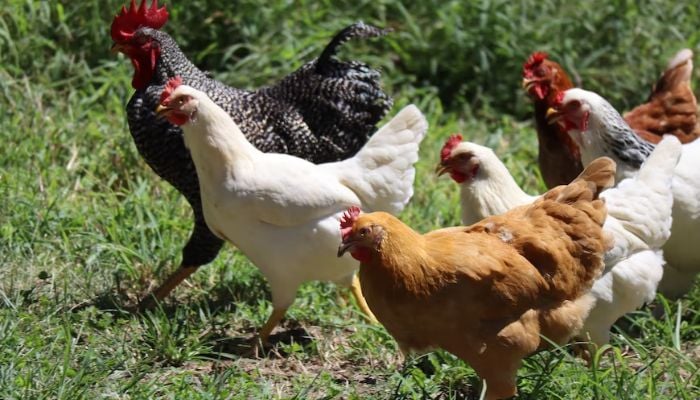Does avian flu affect humans?
Devastating avian flu strain is destroying wild bird populations as well as domestic chicken farms throughout the world
February 02, 2023

Scientists are monitoring cases of avian influenza infections in other animals, including many species of mammals that are more closely related to humans, as the lethal strain continues to decimate bird populations over much of the world and people look for avian flu symptoms in humans.
Officials from Canada and the US discovered highly dangerous H5N1 avian flu in a variety of animals throughout the course of the previous year, including bears and foxes, reported CBC News.
The national reference laboratory for France revealed in January that a cat experienced serious neurological symptoms following an infection in late 2022, with the virus displaying genetic traits of mammalian adaption.
The most alarming, according to numerous biologists, was a sizable outbreak on a Spanish mink farm.
Farm workers started noting an increase in animal mortality in October of last year. Sick minks had a variety of severe symptoms of avian flu, including loss of hunger, excessive salivation, bleeding snouts, tremors, and a lack of muscle control.
According to a study published in this month's issue of Eurosurveillance, the cause turned out to be H5N1, making it the first documented incidence of this kind of avian influenza infection among farmed minks in Europe.
"Our findings also indicate that an onward transmission of the virus to other minks may have taken place in the affected farm," the researchers wrote.
In the end, more than 50,000 minks were either killed or culled, which represented the whole population.
According to Michelle Wille, a researcher at the University of Sydney who specialises in the dynamics of wild bird viruses, it represents a significant shift following just occasional instances among humans and other mammals during the previous ten years.
"This outbreak signals the very real potential for the emergence of mammal-to-mammal transmission," she said in email correspondence with CBC News.
There was only one farm, and remarkably none of the workers, who were all wearing disposable overalls, face shields, and masks, contracted the disease.
However, the current worry, according to infectious disease expert Dr Isaac Bogoch of Toronto, is that if this virus mutates in a way that makes it more easily spread between mammals, including humans, "it might have devastating implications."
"This is an infection that has epidemic and pandemic potential," CBC News quoted him as saying. "I don't know if people recognise how big a deal this is."
A devastating avian flu strain is destroying wild bird populations as well as domestic chicken farms throughout the world. Some scientists express concern that the virus may one day improve its ability to infect people and maybe cause a pandemic.
h5n1 mortality rate
This strain of highly virulent avian influenza can have a fatality rate of close to 100% in birds, decimating both wild bird populations and poultry farms but can humans get avian flu?
It frequently results in the death of humans and other mammals as well.
Over the past 20 years, 240 cases of H5N1 avian influenza have been reported by the World Health Organisation (WHO) in four Western Pacific nations, including China, Cambodia, Laos, and Vietnam. Half of those who were afflicted passed away.
According to global WHO statistics, more than 870 human cases and at least 450 fatalities – a fatality rate of more than 50% — were reported between 2003 and 2022.
The majority of human illnesses likewise appeared to be caused by close contact with diseased birds. The outbreak in Spain may be the first known case of mammalian propagation, but real-world mink-to-mink transmission now clearly implies H5N1 is "poised to develop in mammals," according to Wille.
Having an "intermediary host" is a typical strategy by which viruses adapt to new host species, according to Louise Moncla, assistant professor of pathobiology at the University of Pennsylvania school of veterinary science.











